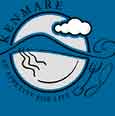
| ||||||||||||||||||||||||||||||||||||||||||
| info@kenmare.com | ||||||||||||||||||||||||||||||||||||||||||
| ||||||||||||||||||||||||||||||||||||||||||

The ConnectionsThe American Connection:William Penn who departed from Cork to found the State of Pennsylvania drafted an agreement for a lease of land in favour of Sir. Wm. Petty March 3rd. 1687. Lansdowne is a town of approx. 12.000 in Delaware County Pennsylvania named for the Lansdowne Estate. The Dublin Connection :The Petty-Fitzmaurice's owned most of the ground around St Stephen's Green and the Ballsbridge area. "Kerry House" located close by the present day Shelbourne Hotel was the 'Town House" for the family. William Petty-Fitzmaurice. great grandson of Sir. Wm. Petty was born in Dublin in 1737. he succeeded to the "Title and Estates of Shelburne". He was to become Prime Minister of Britain in 1782 later created "Marquis of Lansdowne". The family were close friends of Dean Swift, Tom Moore and other notables of the day.  Sir William Petty - Biographical NoteBorn the son of Romsey (Hampshire) cloth worker May 26th. 1623 showing an genius for Scientific & Practical matters. At the age of 13 he went to sea, being shipwrecked off France, later studied at the Academy of Caen with the help of the Jesuits. He studied medicine and chemistry, becoming assistant to Thomas Hobbes, eminent Mathematician and Philosopher. Petty returned to London 1648. published important educational works and new invention of duplicating writing of documents. He had also made acquaintance with other scientists and thinkers whose meetings foreshadowed the formation of the Royal Society. Petty moved to Oxford 1648 to study medicine becoming M.D. and a fellow of Brasenose being appointed Professor of Anatomy & Vice-principal of Brasenose 1651. He also became Professor of Music at Gresham College London. Dr. Petty came to Ireland in 1652 as Physician - general with the Cromwellian forces. He surveyed and laid down onto the measurements of the confiscated and fortified lands of Ireland the first of its kind which was to become known as the "Down Survey". Petty also worked on an atlas of Ireland Hibernial Dilineatio published 1685. In 1657 he received in reward for his services 3.500 acres in Kenmare & Tuosist. A further 2,000 followed by a quick purchase of lands allotted to various Cromwellian soldiers. Just before the "restoration" Dr. Petty returned to London where he became friendly with Samuel Pepys and renewed acquaintance with scientists of the day. Despite his strong "Cromwellian" connections he succeeded after the restoration in finding favour with Charles II who was interested in scientific matters resulting in his being knighted in 1661 and also making him a grant of the entire parishes of Kenmare, Tuosist & Bonane. Sir William became a founder member of the Royal Society 1662, inventing a double bottomed ship the same year. Petty's rapid rise to fortune in the locality did not go altogether unopposed. The O'Sullivan Beare were the owners of Tuosist before 1641. The reigning O'Sullivan Beare in 1657 was Donal Crone (i.e. The Swarthy), grandson of Sir Owen O'Sullivan Beare. During the civil war in England he had strenuously espoused the cause Charles II and his father. As late as 1653 he was still holding out against the Cromwellians in Dursey Island. He escaped to the Continent shortly afterwards. Instructions issued to the Sheriff 1660 directing he be repossessed of all his lands came to nothing. O'Sullivan never recovered an acre of his lands. In 1667 Sir William married Elizabeth, widow of Sir Maurice Fenton & daughter of Sir Hardress Waller, she was created Baroness Selbourne by James II 1688. After Sir William's death 1687 his fortune (Possessor of approx. 270,000 acres) together with the title passed on to John Petty-Fitzmaurice, son and daughter Anne who was thus enabled to purchase Bowood Estate, Calne. Wiltshire in 1754, which, to-day as Bowood House & Estate is one of the "Big Houses" to see on the visitor circuit in Britain. Sir Wm. Petty lived through one of the most exciting periods of English & Irish history it his work however, in the field of political economics his name lives on. He had proposals for union with Ireland, a state medical service, land registry & reforms in taxation in works published 1690 & 1691 "Political Arithmetic" and "Political Anatomy of Ireland". Kenmare town (pop. approx. 1,250) steeped in its historical heritage located in one of the most beautiful parts of the World at the head of Kenmare Bay or to use it's old name "Inbir Sceine" in the South West corner of Ireland. The Irish name for Kenmare is Neidin, the "Little Nest" however, there is no connection between the two. The "Little Nest" nestling as it does among the high green mountains surrounded by ice age lakes and rivers balmed by the waters of the Gulf Stream. Long before the town of Kenmare was established by the Marquis of Lansdowne there existed in this place a local population in the valley. Kenmare Town...The connection with Sir William Petty 1623 -1687. Modern history of Kenmare town and valley commences with the arrival of Dr. William Petty in the mid 1650's as he was known at that time being Knighted in 1661. Petty had two sons and one daughter. Anne Petty married Thomas Fitzmaurice of Lixnaw Castle 21st, Kerry and 1st. Earl of Kerry forebears of the historical "Petty Fitzmaurice's". Ann Petty's brother Henry, Earl of Shelburne dies 1751 without issue leaving his Estate to Anne's younger son John Petty-Fitzmaurice. The title Earl of Shelburne was revived in his favour in 1753. At his death 1761 John was succeeded by his son William who was born in Dublin 1737 and in 1760 at the age of 23 succeeded to the Title & Estates Shelburne. This then was the man responsible for the planning and layout of the town of Kenmare as seen to-day. William Petty-Fitzmaurice 2nd. Earl of Shelburne instructed the surveyor John Powell to plan the town Kenmare. This was to become known as the "X: plan in keeping with its layout. This Earl was to become Prime Minister of Britain in 1782 and to remain in office to conclude the Treaty of Paris 1783 which ended the war of the American Revolution. He was created 1st. Marquis of Lansdowne 1784. One of the first buildings in the town of Kenmare was the Estate agents residence the Lansdowne Inn Lodge 1775 and by the 1790's work began the other important buildings which included Shelburne House, the Earl's town residence, An Inn (Lansdowne Arms), of Market House, Butter Market, Schoolhouse, Bridewell and a Malt House which in fact was not built. There were many skilled tradesmen introduced from outside, many of them staying on. The principal street names reflect the towns origins. William St. - 1st. Marquis of Lansdowne Irish history once again asserts itself and we remember our heroes honouring them with Davit's Place and Parnell's Place. Reenagros Park was laid out as an idyllic oak island 3 min. from the town centre on the inner waters of Kenmare Bay and alongside Kenmare Golf-links (18 holes) planned by Lord Lansdowne early 1900's, all which can only be described as "Heaven on Earth". 'Reenagros enchanted isle On thee bright nature seems to smile Thy velvet walks and cooling shade Shall never from my memory fade' We gratefully acknowledge 'Kenmare Journal' - A Bridge to the Past with special reference to articles by the late Liam Cousins, the late David Leahy. Gerard Lyne & Danny Moriarty and The Hanley family of the Lansdowne Arms Hotel . |
